|
Getting good at anything takes a lot of repetition. While children love repetition when playing games, listening to stories or other activities, they are not so keen when it comes to mastering a piece on the piano. To get repetition we need to make it fun for them. The primary way I do this in lessons is by using 3 practise buddies. The goal is to get one good repetition for each practise buddy which they can then move / throw. I have a wide selection of toys I use and they enjoy picking which 3 they will use today. I try not to rush them on this as I see that they really like looking through the toys; on the other hand if it starts taking too long I count to three! The toys can be used in various ways. Small toys sit on one side of the music stand and are moved to the other for each correct repetition, the same for the slightly bigger finger puppets I have. Sometimes I give them a treat and we get out the big soft toys! These are great fun to throw and I put a chair a reasonable distance away for them to aim at: they love this! All these different activities are great ways to get repetition while making it fun for the child. I know some teachers use Lego and children build something simple as they go along. When a child is first learning a piece it is unreasonable to expect them to achieve perfect repetitions. So long as they made their best effort and the piece was mostly correct I usually accept it as good enough to move a practise buddy. If there was a major problem I address it before having another go with a buddy. Generally, children improve through the repetitions and the third one is often pretty good. Expectations for the quality of repetitions can increase as the week goes on. With regular daily practise, by their next lesson children should be great at playing their piece. Most Music Moves pieces come with accompaniment videos kept in the online classroom and always linked to in the homework notes. It’s probably best to ensure your child masters the piece without playing along with the video first, but as soon as they can mostly get through it, it’s a good idea play along with the video so you can both check it’s sounding correct. If you can't read music you can also check it’s correct by listening to the ‘listen to’ video for that piece. Once children can play their piece correctly nearly all the time then it’s time to move on to ‘Magic Number 3’. This uses the same buddies but instead of moving a buddy for each correct repetition and it staying there, it is at risk if the other repetitions are not perfect. So if the first go is good, move a buddy, if the second one is also good move a second buddy, but if the third goes wrong all the buddies have to come back. I haven’t used this strategy with most Music Moves students so far as they are all fairly early on in their learning journey but it is very useful to keep up your sleeve if your child is getting a bit bored with their practise because they’re good at it! It’s also very good to encourage serious concentration. We all need to use our judgement here and if this approach is too hard then be sure to revert to the first strategy before frustration or upset arises. We often joke that the buddies are going shopping / to a party and if I want to get more repetitions I suggest we have some more goes to ‘bring our buddies home’ after their trip. Children usually enjoy this and I often get 5 or 6 repetitions this way, stopping when I sense they’ve had enough.
I’m sure you or your child might think of more ways to use the buddies – do share them in the comments or let me know how you get on with this strategy at home.
0 Comments
What a great question! The first books of Music Moves for Piano were written to be used with children from the age of 4 by Marilyn Lowe White, helped by Dr Edwin Gordon who spent his career researching how children learn music. First of all I'll consider what the method offers, then move onto music aptitude, which is ability to achieve in music. By the end I hope you'll know that your child is probably not too young start Music Moves for piano lessons! You might have heard that children should wait to learn piano until they are 6 or 7 years old and this is probably true for many other approaches because they try to teach piano playing through the reading of music notation. The problem with this approach is that most children don’t have much experience of listening to and making music and so are unlikely to be very successful understanding the notation because they have no musical foundation. Often the approach is the opposite of joyful music making and becomes one of a struggle to read notation. The music gets lost, children get frustrated and lose interest and parents feel they are fighting a losing battle to get their child to practise. Were you one of these children? Is your child? It doesn’t have to be this way. As the folk singer Peter Seeger wrote in Henscratches and Flyspecks (1973: p9) ‘Would you teach a baby to read before it could talk? Should a teenager study dance notation before learning to dance? Musicians need, in the beginning, to training their ears, their vocal chords, or their hands, and to develop the sense of music that tells them when to sing (or play) what’. As a non dancer I can imagine just how difficult I would find trying to interpret dance notation – it seems it would be next to impossible! Music Moves starts with music (not music notation), front and centre and develops a child’s audiation (the ability to understand and, eventually label what is being heard). For example, is it major, minor or something else, is it in duple meter (march like), triple meter (dance like), or something else? Now you know Music Moves starts with music let’s move on to music aptitude. Music aptitude means the ability to achieve in music later in life and is a product of both nature and nurture. Children are born with varying degrees of music aptitude. If they grow up in a musically poor environment then their level of aptitude will decrease. If they are exposed to a rich musical environment then their aptitude will increase. A rich musical environment doesn’t just mean listening to music at home. Most music at home will be in major tonality and duple meter. Children need exposure to different meters and tonalities. As well as major and minor, a rich musical environment exposes children to music in tonalities such as Mixolydian, Dorian, Phrygian, Lydian and so on (what we call ‘the modes’). Not only do they need to listen to these but they need to interact with them in a purposeful way, because we know that children learn through movement. For example, children might move as if they are carrying something heavy, or as if they are feathers floating in the sky, or as if they are trapped in a box or swimming underwater. They need to hear and sing the resting tone, tonal and rhythm patterns which are the building blocks of music. Young children and babies who experience this richness of music environment are developing their music aptitude. The most important age for developing this is the time right after birth to about 5 years old. Music aptitude fluctuates during this time. We can make a parallel with language learning here – we talk to babies before they are born and never stop! They get very good at understanding us, making sounds, copying us and eventually speaking. Music needs to be taught the same way. I watched a YouTube lecture by Dr Gordon (I’m afraid I can’t remember which one) where he talked about singing songs to babies, but not singing the last note (the resting tone). The babies would stare at him till he sung it and then they would be satisfied! The babies knew ‘where the music needed to go’ to sound finished. Mozart did the same thing to his father, practising scales late at night but missing the resting tone, his father would come down the stairs to protest, unable to bear hearing an unfinished scale! As children grow older their level of aptitude fluctuates less and less until it stabilises around age 9. By then the environment can no longer influence a child’s potential to achieve in music. This doesn’t mean it’s too late and of course children can still achieve in music but it won’t be as easy for them as those who started early. So if you want your child to receive all the benefits music learning can bring then it’s best to start early with the best possible music instruction – covering all the tonalities and meters mentioned above, and avoid any music notation at all. Music notation hampers the development of audiation and is better left till the child is older and able to grasp abstract concepts. As Dr Gordon says, learning about music (i.e. music notation) is not learning music! I wrote about that here. The Music Moves programme is based on the research of Dr Edwin Gordon who had input on writing the method. It provides exactly the rich environment your child needs to succeed and thrive in music. As your child enters school around age 4 there is one year left to really make a significant difference to their musical aptitude, or ability to achieve in music. But, I hear you say, ‘my child isn’t ready to practise, I know they won’t play the piano regularly’. This is true. Young children often don’t want to practise the piano, but that doesn’t matter. They will play the piano in their lessons and will develop their technique and ability to navigate the keyboard with ease, they will learn pieces, improvise and compose, their audiation will develop (ability to understand and label what they are hearing), they may even decide to play in a concert. They will learn all these skills regardless of practise at home. At home, if your child doesn’t want to practise then listening also counts, in fact at this age listening is the most important thing. Music Moves involves lots of listening – listening to pieces they are going to learn, listening to songs and chants, listening to a variety of other music. All of this will influence your child’s musical aptitude. You could create a really special time at home, listening, singing and moving to the songs, chants and pieces. Last year I taught one Reception child for a year who doesn’t want to practise at home. He has made progress, he can play different pieces (at our last lesson in the summer term we reviewed about 12 pieces – he remembered them all!). He can move in time to the beat and echo rhythm patterns. By the end of his first year he was able to echo tonal patterns in tune – this was a huge achievement for him. It took a whole year to be able to do this. Imagine the benefit this brings him – he is starting to be able to hear music and sing it back accurately. I know children age 10/11 who haven’t learned this way, who can’t do this. This is the start of being able to understand and play music beautifully. He can do it now, he will always be able to do it and it will stand him very good stead in the years to come. I have another child a year ahead of this one and during her second year of piano study, in Year 1, I was told that her interest in piano was growing and she was practising more and showing more interest. She was also interacting musically with music she heard. As children’s understanding and audiation develops so does their interest, curiosity and desire to play the piano and make music. These children aren’t just learning piano, they are learning music. They will be able to make, understand and enjoy music for life and this is why I teach piano! If you’re still with me – thank you! This has been a long post but it’s an important topic. I hope you can see that your child isn’t too young to start the Music Moves programme and that now is the time start developing their musical aptitude so that they will get the wonderful, lifetime benefits of music and piano playing.
If your child is in the Music Moves programme you (and they) may start to wonder when they will start to learn to read music, after all most piano lessons involve learning to read music almost from day one. Music Moves is different. In this audiation based approach children learn music first, and music reading later. Audiation: the ability to think music in the mind with understanding Learning about music is not learning music. If your child is in the first few years of the programme then they are currently busy learning music through listening to it, moving to it and making it. They are developing their audiation. Formal music reading will be introduced when they are ready to grasp abstract concepts, around age 10-11. At that stage it’s their audiation that will help them read music with understanding. More on that later.
Imagine how impossible that would be – how would you describe a world they had never experienced, how could they ever deeply understand about the world only through reading about it. Instead of being filled with joy and wonder, your child’s experience would be dry and meaningless. Music is wonder, awe, sadness, despair, joy, happiness. Music takes the experience of being human and delivers that experience back to us through sound. It is with us when we’re happy, when we’re sad, when we want our mood lifted, when we want to relax – there are thousands of pieces of music for every human emotion and experience. If music reading is introduced as soon as a child starts learning an instrument then they are at risk of missing out on the wonder of music. Music Moves for Piano is based on Music Learning Theory, developed by Dr Edwin Gordon who spent his career studying how children learn music and coined the term 'audiation'. People who audiate can:
If we want children to easily read music then we have to start from an aural / oral perspective When children can grasp the concept that: sounds the same as and both use the same rhythm syllables but are written differently, then they are ready to formally learn how the musical patterns they already know are notated. Taught in this way, the ear, the heart and audiation are at the centre of the music learning experience. Before this children will be exposed to how music is notated by looking at the score and noticing patterns, so they will start to recognise patterns before the formal instruction begins. This puts them in a good place as they will start to become familiar with music notation long before they are expected to read and play from it. Gordon's research shows that children can grasp abstract concepts such as this, around age 10-11
I am just starting to experience audiation. So far this means I sometimes just ‘know’ what is coming when I sight read (hopefully that will improve some more!); I hear more of the important notes in the music I’m playing; I can learn and retain complex pieces more quickly. I see what children in the programme can do, the joy they derive from their lessons and music making and am excited to see what lies ahead for all of us. It might look to both you and your child that you are not making progress, or that progress is too slow, or that you are not learning what you expected to learn. But the learning is happening in your child’s audiation. You can’t see this, you will only hear it, and they will experience it as time goes by. Your child’s experience and knowledge of music is growing steadily and will gradually become evident in the way they play and change their pieces, their improvisations, their compositions. If you want to compare to their peers look at more than music reading. Ask yourself, can they do the things people that are learning to audiate can do? They may be able to read music, but you can do so much more than this: you can make your own music. I'll leave you with a quote from the author of Music Moves for Piano: ‘Music notation, in itself, cannot teach music reading. What this means, is that with a familiar music vocabulary (what we are building from day one of Music Moves) children learn to understand and play music they have never seen or heard before. In other words, they can sight read music far more easily than those who have not been taught this way. I hope you will agree this is a goal well worth pursuing.
What do you feel when you listen to music? If it’s uplifting music then you might feel joy, if it’s sad music you might feel down, or even despair, if it’s grand music you might feel expansive and powerful...so what is music? Answers that come to mind are it’s creativity, it’s life, it’s feelings, it’s expression, it’s self expression….what answers come to mind for you?
This led me to consider what then is the purpose of piano lessons, if music is creativity and life, expression and feelings then surely the purpose of piano lessons (or any other instrumental lesson) is to access these feelings, to express them in music. What do students need in order to be able to experience music this way? In short audiation…..watch this video to see audiation in progress - these musicians 'think' music so well they can create great beauty never having met. If this isn't life, then I don't know what is!
Audiation means to ‘think music’, or in the words of Dr Edwin Gordon ‘audiation is to music as thinking is to language’. Just as we ‘think words’, the right sort of teaching can teach people to ‘think music’. (If you’re curious, Dr Gordon spent his academic career studying how children learn music and developing Music Learning Theory, the rigorous academic foundation of Music Moves.) Audiation means 'to think music'
The wrong sort of music teaching doesn’t teach people to ‘think music’ it teaches them to interpret dots on a page that they generally don’t understand. Think how it sounds when your child reads aloud a book they don’t understand. They read the words, but they don’t understand them. The words have no meaning to the child and it sounds that way to the listener. The same thing can, unfortunately, happen in music playing as well.
The right sort of music teaching teaches children to play with understanding
With Music Moves, students’ audiation is developed from day one and developed over years. They hear and echo tonal and rhythm patterns which are the building blocks of music, they feel and move to the beat, they listen to and play a varied range of music using the entire range of the piano. They develop piano technique that allows them to achieve the sounds they want to achieve, they hear and tell stories about the music they are playing. They experiment and explore sounds at the piano, they compose their own music as well as that played by others, they improvise and create. All these areas are developed over the child’s music learning journey, which becomes an extremely rich and fulfilling one.
Music at its best is enjoyed with other people, it provides a bond, a common experience, a language everyone can, in part listen to even if they don’t fully understand it. Music Moves for Piano is unique, not just in that it really does get to heart of what music is about – audiation (thinking music) - but also because it is designed to be taught in small groups. At Surrey Music School children studying Music Moves learn in groups of around 3. They move together, sing together, make music together, as well as having frequent opportunities to do these things solo as well. From day one your child will be making music solo and with others, learning to express themselves, developing their ear and piano technique and having a joyful, meaningful experience.
You may have noticed musicians performing with feeling, with flow (lost in the moment), with meaning… have a look at these videos to see audiation in action:
As we prepare to return to piano lessons next week and I sit down to write the invoices for the new online classroom fee it seems right that I let you know about the value it provides. Hopefully you saw this for yourself last term as your child learned and practised new skills. This blog post tells you how to get the most out of your online classroom experience. Theory During face to face lessons I taught music theory during the lesson through games and then set theory homework. This took up a lot of lesson time and despite revisiting topics frequently I still found that children found them hard to remember. This was just 'the way things were' and I accepted it, taking time to play games as necessary. Lockdown forced me to find a different way of teaching theory. I discovered that teaching via video is extremely effective and frees up valuable lesson time for piano playing. The online classroom allows children to watch the videos, which include activities, as many times as they want to until they are confident in their knowledge. Children can practise their skills on the automatically marked quizzes that accompany each unit. As I'm sure you already know, practice is important for good understanding. I am seeing children engaging with the quizzes and making multiple attempts to improve their score which means that their knowledge is becoming thoroughly embedded. I am also receiving correct answers to questions I ask in lessons! This approach is called 'flipped learning' and is very effective. Children can thoroughly learn ideas outside lessons and are much better prepared for lessons, which become more effective. Most of you are already using the online classroom really well, but just in case you're not completely clear, the value from it comes from engaging with it as I set it, including:
Over the coming academic year the theory part of the classroom will grow into a complete course in beginner music theory and your child will continue to benefit from all the advantages it provides. Improvisation The children (and I!) love improvising. It is such fun to just sit at the piano and be able to make music without being tied to what is written on the page. Improvising allows children to express themselves through music and play much harder things than they can read. The online Improvisation course has provided fantastic 'motifs' that children have loved learning. They developed and made them their own during the last school year, including making up completely new motifs. It has allowed children to pick and learn motifs in their own time and explore the sounds the piano can make. There is already a new 'Improvisation Inspired by Nature' and, time permitting, I hope to add more to this part of the Improvisation course. My priority at the moment is, however, the theory course. Music Moves Finally, Music Moves! Music Moves is currently only studied by two students however this is something I plan to expand when I have space for new students (when face to face lessons resume). Music Moves is a new programme for 4-7 year olds that teaches core music and piano skills through movement, improvisation and rote playing. There are preparation videos for learning each piece, where children move and listen together with videos showing children how to play the piece when they are ready. There are also accompaniment videos for each piece. The online classroom provides excellent value for these students, allowing them to engage with me every time they practise! Listening Music is a language and, like all languages, listening is a vital part of the learning process. Last academic year I put up a Peter and the Wolf listening project for children. This term I will be putting up Carnival of the Animals which is a great piece that children will enjoy listening and moving to. I have also embedded a Spotify playlist of general classical music. Engaging with both of these resources will further develop the rounded music education I am developing for your child. The Spotify list can be listened to anytime and does not have to be a serious 'sit down and listen' exercise! Conclusion
I only have 30 minutes a week to teach your child piano. Piano teachers around the world complain it is impossible to cover all the things that provide a rounded music education in this limited time. Inevitably some things have to give and these are often music theory and improvisation, not to mention general listening! The online classroom allows your child to benefit from these very important areas of music and means that they understand better, make faster progress, play more musically and, of course, enjoy more. It has been such a good find for me and I am excited about what it has to offer for your child. I look forward to developing it further and helping your child's music education be as rich as possible. What has your child most enjoyed about their virtual lesson experiences so far? Do post your comments below! In 2005 as a fairly new piano teacher I enrolled on a 2 year distance learning post graduate diploma course at Reading University called Music Teaching in Professional Practice (Mtpp) (sadly now defunct). I'd been teaching a couple of years and felt sure there must be more to music teaching than I was then doing, but I just didn't know what it was. I taught in the way I'd been taught, starting with Middle C and using notation from day one. The Reading course started with a week long summer school when we were exposed to dozens of new ideas including singing and moving as ways to teach music, the ideas of significant music educators such as Kodaly and Dalcroze. From this first week my teaching was transformed. I sought out new information and ways of doing things and as soon as term started in September I was ready with an entirely new approach. My students were introduced to playing by ear, singing before and as they played, improvisation and many other new activities. Over the next couple of years I went on both the Kodaly and Dalcroze summer schools. My and my students' enjoyment rocketed and my studio became very successful. These experiences made me into the teacher many of you know today. I learned so much on the Mtpp at Reading it kept me going professional development wise for many years, until The Curious Piano Teachers (CPT) came into being in May 2015. Still being keen to learn new approaches I became a founder member. Membership of the CPT refreshed my teaching and exposed me to yet more new ideas! One of these new ideas is Music Moves for Piano by Marilyn Lowe. Marilyn's teaching and tutor books are informed by the research of Edwin Gordon, a music educator and researcher who passed away a few years ago. He devoted his career to studying how children learn music and developed a theory of music learning called Music Learning Theory (MLT). Music Learning Theory brings together the ideas of all the great music educators including Kodaly, Dalcroze and of course Gordon himself. Gordon found children do not learn music best through reading notation from day 1. I stopped using notation from day one in 2005 and did from a few weeks to a few months without notation however Gordon takes it much further and only introduces reading once it is developmentally appropriate and many fundamental musical skills such as keeping a beat, understanding rhythm, singing and learning to listen have been developed. In the MLT approach, before reading is introduced children learn music the same way as they learn language. Think about your child's acquisition of language. What process do they go through? Well, they:
In many areas of the world (think Scandinavia) children don't start to learn to read until they are 7 or 8 and research shows they read just as well and with less of a struggle than those who learn to read earlier. Music is a language that needs to be acquired in the same way as spoken language. But traditional music teaching does not follow this approach. It starts at the last stage of language acquisition, with the written symbol. Is it any wonder that many (is it most?) children learning the traditional way struggle with their instrumental lessons? Well meaning teachers are expecting them to read without having developed all the skills necessary before the reading can be successful, enjoyable and pretty easy. Children are also not able to easily understand abstract concepts (such as reading music) before the age of about 9. Of course this depends on the child; this year I have had a couple of 8 year olds very able to grasp music reading but some younger ones have found it more difficult and reinforced my belief that using Music Moves in the first couple of years of learning is something I will do with all children aged 4-7. During my time at Reading University I read Teaching Music Musically by Keith Swanick that made the point that the eyes are a stronger sense than the ears and when a child is struggling to interpret notation their eyes take over and their ears are not used. So the musical experience is lost in the struggle to read. There is a real risk that this leads not to a love of music but resistance to it. I have long believed that there is more to playing the piano than simply reading notation and for years have tried to put this into practice through improvising and playing by ear but as soon as reading is introduced the lesson focus tends to become largely about reading and other areas are pushed aside. These other areas are what makes true musicians and, as well as playing by ear and improvising include:
When reading is introduced too early these other vital aspects get pushed out because there just isn't time for everything. And learning to read takes time, especially when the listening, moving, improvisation and playing foundation hasn't been laid. Since April 2020 I have been piloting Music Moves material in online piano lessons with two 6 year olds and have seen for myself that this method brings music to the forefront of the child's experience. Children learn to listen to music, move to it, sing, chant, improvise vocally and at the piano and learn to play short pieces, sometimes solo often accompanied by the teacher. I have watched these two girls, who started from very different places, flourishing. In a few short months they have become independent, accomplished musicians, able to remember and play all the pieces they have learned. They are developing a natural pianist's hand shape and technique (without even realising it) while having fun, musical experiences at all times. Their imaginations are inspired, they play musically and they love their piano. I feel emotional when I see how well they are doing and how engaged they are with the process. This is not how my music lessons were!
Music Moves is a programme that can be done in groups of 3 and once social distancing is no longer necessary Surrey Music School will be enrolling children aged 4-6 into this new programme which will give children the best introduction to music you could possibly wish for them. If you want your child to fall in love with music, then this is the programme you need. To get on the waiting list for when face to face teaching resumes please submit your email address below and I'll be in touch. If you want to know when face to face teaching may resume please read the blog post about it! As we look towards September I know some of you are hoping that face to face lessons will resume. However it became clear to me some weeks ago that I would need keep my teaching practice online for the foreseeable future to ensure everyone's safety and that piano lessons do not become a source of transmission for Covid-19. Online I currently see more than 20 children a week from more than 9 different schools. In 'normal' times I see around 30 students a week. As soon as the government started talking about bubbles in schools I could see that were I to return to face to face teaching I would be breaking bubbles left right and centre. This would increase both the risk of me not only transmitting the virus between students, families and schools but also catching it myself. These are not risks I think worth taking. Breaking bubbles for the sake of face to face piano lessons is not a risk worth taking. There is also the issue of sharing the piano. In every lesson I demonstrate on the piano. In online lessons I use my own piano. In face to face lessons I'd have to use the same piano as the student (with the exception of one location). Guidelines for piano teachers are that the piano keyboard should be cleaned between each student and it would certainly not be practical to have to stop the lesson to clean the piano before and after every demonstration! Not to mention that with my schedule for face to face teaching there is not time to thoroughly clean the keyboard (sides and ends of the keys as well as the surface), the music stand, the door handle, the piano stool and anything else children may have touched after every lesson . What makes face to face lessons special is the contact between student and teacher. The duets, the improvising together, the games we can play and the resources I use. As things stand at present none of these things can happen in face to face lessons. Not only because resources (including the piano) cannot be shared but also because I'd have to stay 2 metres away so would not be able to closely check technique, point at the page, help the student mark up his or her music, reassure normally if necessary. It seems to me that this would be the worst of all worlds. None of the benefits of face to face lessons and also none of the benefits of online lessons! Students are well set up for their piano lessons at home and making great progress. I can see what they are up to technically via video, asking for the camera to be moved as necessary by willing parents, we can use the screen share facility in Zoom to look at music together and Moodle supports the children in their learning between lessons. What has been most surprising about online lessons is the progress children have made and their level of engagement with them. Supported of course by you, their parents. Progress has been at least as fast, if not faster, than in face to face lessons, probably because children have had so much more time recently! So, for the foreseeable future piano lessons will remain online with all the benefits that brings, none of the downsides that would be encountered in face to face lessons and with no risk of Covid-19 being transmitted between me and you. We celebrated the children's progress with a digital showcase in May, the standard of which was superb. When the time comes for face to face lessons to resume and large groups can gather indoors we will celebrate with a joyful, in person, concert. In March 2020, as Covid-19 made its way across Europe it was becoming increasingly clear that I was going to have to take my British piano teaching business online, something I had never even thought of doing, let alone considered possible. How on earth are you to teach piano online?! Well, 314 lessons later I have some answers together with some major innovations in the way I'll teach piano in the future. Supported by The Curious Piano Teachers who provided a wealth of information and were already experienced in delivering online training to piano teachers I got ready to launch. Frantic working out of how to set up kit to ensure an overhead view of the piano and a sideways view of me ensued together with:
There was an issue of how to get resources to families and how to share videos. I overcame this with the help of my good friend Andrew who is an expert in the online learning platform Moodle. I also had to think how to arrange homework notes – Google Drive has been great for this as it allows me to link directly to YouTube videos and specific activities in Moodle. Each child has their own link to Google Drive and accesses their updated notes there each week. Helped by 7 days self isolating with very mild Covid like symptoms (I don’t know if I had it or not, whatever it was was very mild and quite probably a chill, but I didn’t want to take any risks) I was ready for piano in week 1 of lock down. As were many of my ‘piano parents’. Piano parents were not only having to cope with their own rapid learning of new technologies and ways of doing things, they also had their children at home, were trying to work while also home schooling and, on top of it all they committed to keep their children’s piano lessons going. So thank you ‘piano parents’! Without you none of the innovations I have made would have happened. I would have had to put my feet up during lock down and make sure I looked after my own mental health without work to hold on to. Work has kept me going through all of this. Thank you 'piano parents'. You have kept me going throughout this. Always wanting to be the best I can I also spent quite a few hours in the first few weeks attending webinars about online teaching. The Frances Clark Center had some really great ones. As it turns out I should have had more confidence in myself as my training meant I was already equipped to deliver engaging lessons, apparently regardless of whether they are online or face to face! I was finally able to put into practice some training (from The Curious Piano Teachers) about feedback. They have done a few Curiosity Boxes on this and I loved the first one, about asking questions. I’ve been using this for a few years now and it’s a great teaching technique. The second box focused a lot on feedback about what you, as a teacher hear. Whenever I’d tried this during face to face lessons it sounded very patronising to me and I didn’t use it much. Online however I see just how effective it is. I discovered that instead of telling a student they played the wrong note in bar 3, for example, I could say ‘I heard that you played a second up in bar 3’ and after a few seconds they usually respond with ‘ahhh’ and immediately set about having another go and correcting the mistake within 2-3 tries. I came across quite a problem with rote teaching which is a large part of what I do in Piano Safari (my programme for 7+ year olds) and Music Moves (my new programme for 4-6 year olds). Students tended to have just one device to their side and it was hard for them to look at that while I played a section using my overhead camera view, then look at their keyboard and remember what to do. After some thought this was easily solved by asking them to either put a second device on the music stand during rote learning, or moving their existing device to the stand. So rote teaching has been a success too. A major problem for me came with a pair of twins I teach who were racing through Piano Safari, which starts with rote and off stave work, towards the unit where the stave is introduced. I had previously taught one child how to read on the stave via a Zoom lesson but I knew I could do better. This is where Moodle really came into its own and I started to use it as a flipped learning environment. Its a new phrase to me but it means that students first learn about concepts via video teaching and then discuss it with the teacher afterwards. Until then I'd used Moodle as a repository for the resources I use in face to face lessons so that parents could print them off and use them at home. The problem with this was that parents were already desperately busy and it was not realistic to expect them to do a lot of printing and cutting up! The videos meant that children could take responsibility for their own learning, watching them and doing the activities mostly independently (I hope!). Then followed some serious professional development where I had to really think through in minute detail how to teach a concept as complicated as ‘the stave’ via video! There was also further professional development in thinking through how to actually make, edit, upload and embed videos. Work on Moodle has taken up a large part of my non teaching time this term. I discovered it’s no good ad-libbing in a video, I had to tightly script each video to make sure concepts were crystal clear! Reader, I can tell you that this has been a success! The twins learned all about the stave via the teaching videos and within a couple of weeks became confident music readers. Of course, it’s no good making teaching videos without also giving the children a means to practise and test their knowledge, so the next step was to create quizzes to go with the units of work. By now I had reached my capacity for learning new things. Andrew once again stepped up and offered to do the quizzes for me. So now I write the quiz in a spreadsheet and he creates the music images in Muse Score and makes the quiz in Moodle! Eventually I’ll learn to do that too, but not yet. As a trained teacher himself Andrew is also able to give useful feedback on Moodle content. I am already seeing the huge value of the quizzes where children are making multiple attempts, improving their score and the time it takes them every time. Some can already do the first quiz as fast as I can! So in the space of 4 short months I have learned that online piano lessons are not just possible, they are effective. They have also given rise to some superb opportunities for professional development, particularly in terms of thinking how I want to teach theoretical concepts and creating step by step teaching materials that will be used long past when we return to face to face lessons. Thank you to all the 'piano parents' who have kept their child’s musical journey going throughout this difficult time. You and your wonderful children have kept me going too.
Why all cows do not eat grass, or, in other words, why using mnemonics to learn to read music does not work!
When you learned piano as a child, you may have learned to identify note names using mnemonics. There are four you may have had to learn. Examples include:
For the treble clef spaces: FACE For the treble clef lines: Every Good Boy Does Fine For the bass clef spaces: All Cows Eat Grass For the bass clef lines: Good Boys Do Fine Always
Here we have four sentences to remember, the ones for the notes on the lines are confusingly similar! So not only does the student have to remember four sentences, he or she also has to remember to which clef they refer and whether they refer to line or space notes. The student also has to remember that the mnemonics all start from the bottom of the stave and go up. Are you confused yet? I am!
Now imagine you're under 10 years old - can you imagine the confusion and struggle a younger person (possibly your child) will face?
I hear many adults still using mnemonics to identify note names. If mnemonics worked, they would not have to keep referring to them. They would simply be able to name the note instantly (like we piano teachers can!). So what is it that musicians do to be able to name notes they may not come across much, for example on 3 or 4 ledger lines? We name them with reference to another note that we do know. This is called a landmark note. Enter the realm of landmark notes and reading by interval! This is the strategy that I and many of my colleagues in The Curious Piano Teachers use to teach note reading. It's also used by the tutor book Piano Safari. When reading is introduced we start with reading intervals of a second (steps) up or down from only two landmark notes; treble G and bass C. The advantage of doing things this way is that once a student can recognise and play a second, he or she can recognise and play a second written anywhere on the stave, including notes he or she can't actually name. This leads to far more fluent reading and playing as students do not need to spend time processing note names, just intervals. It also allows for a wider variety of music to be played. As students progress they learn to recognise intervals of 3rds, 5ths, 4ths and so on. Learning this way also has a profound benefit for the aural element of music exams where students have to name intervals. Did you have to do that as a child? Was it difficult? I relied on my perfect pitch in this area of the exam, not my instant recognition of the sound of an interval. In the intervallic approach, students are introduced to intervals from very early on in their learning and do not have it suddenly sprung on them a few weeks before an exam. Teaching this way is a gift to our piano students. It reminds me of the Chinese proverb 'give a man a fish and you feed him for a day. Teach a man to fish and you feed him for a lifetime'. We could just as easily change this to 'teach a student a note name and he can play one note. Teach him a landmark note and reading by interval and he can play any notes'! 'Teach a student to read one note and he can play one note. Teach him a landmark note and reading by interval and he can play any notes'!
Reading this way benefits students' sight reading because again, they are not having to process note names, just recognise and play intervals. I did not learn this way but I do teach it! I have seen for myself the benefits for students' reading and playing fluency. I know it works, not only because I see it in my students but because when I come across one of those pesky ledger line notes, if I just read the interval, I can instantly play the note!
Are you curious about landmark notes yet? Have a look at this video from Music Mind Games which shows all the landmark notes. All other notes that students up to about grade 6 will come across are less than an interval of a 4th or 5th away. So provided a student knows his or her landmark notes he or she will be able to read the music with much less of a struggle than one that reads by note name. Of course there is a place for knowing absolute note names but that is a post for another day and in the intervallic approach comes a bit later (it also doesn't use mnemonics!). We continue our series on how to support your child's piano practice at home with more practical tips from Dr Christopher Fisher, pianist, piano teacher and piano parent, with a few ideas thrown in from me for good measure!
Remember to be specific and praise effort and not 'intelligence' or 'cleverness'. Children need to learn that good results come from effort which they are in control of, not some elusive talent that some people have and others don't. For example, 'I was so impressed how you persevered the other day when you felt really frustrated that you couldn't do x. You persevered and got it and I was so proud of you'. Or mention the strategy they used that helped them succeed.
Stuffed animals Have your child bring their favourite soft toy to the piano and play for it, asking 'could you play this piece for your teddy and make it sound peaceful, like a lullaby, let's see if teddy can fall asleep'. You hold teddy and make it fall asleep!
These are great ways to get repetition (only accept correct repetitions, use a practice strategy) which is what leads to great progress.
Miscellaneous Tap the rhythm of the piece on their back and get them to work out which piece / song it is and then play it. Get them to do one for you to recognise. Can you play it too?! Roll a dice and the number it lands on is:
Use a two minute timer and get your child to concentrate on one piece for that long (great for younger children). Stop when the timer's up, even if you're tempted to keep going - it's what you said you'd do and it's a bit fun if you're made to stop when you want to carry on - there's always later / tomorrow to carry on.
Mid-week recordings for the teacher Make a mid-week recording for me. Send me something your child has been practicing / has accomplished, or is struggling with. I will watch it and send feedback as soon as I can. |
Caroline BlountDirector of Surrey Music School. Archives
January 2024
Categories
All
|
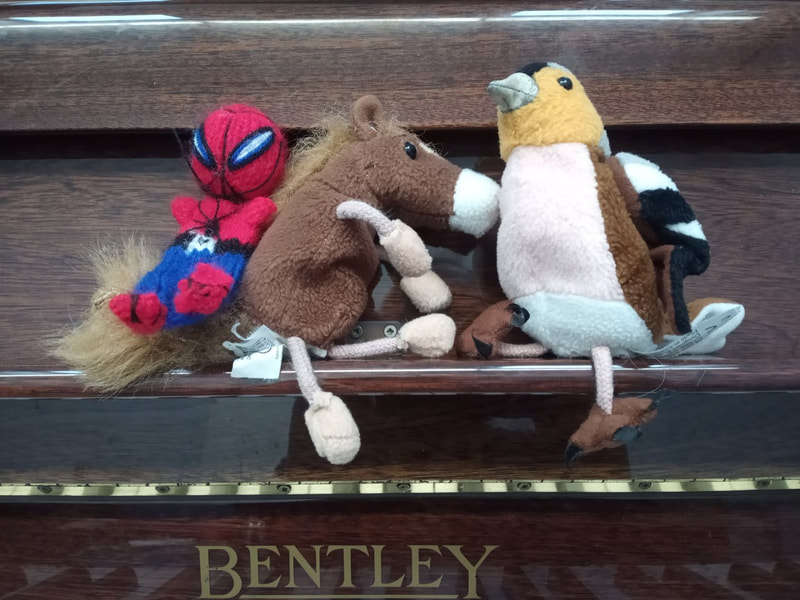

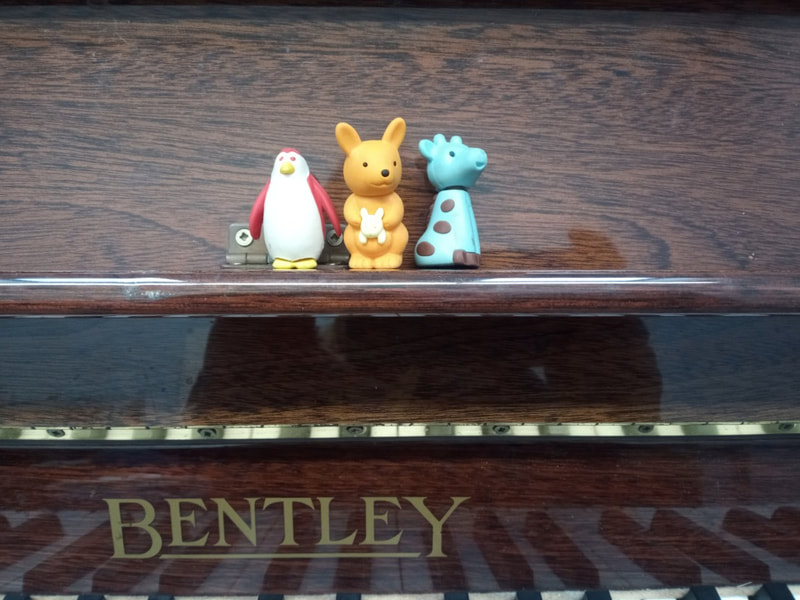

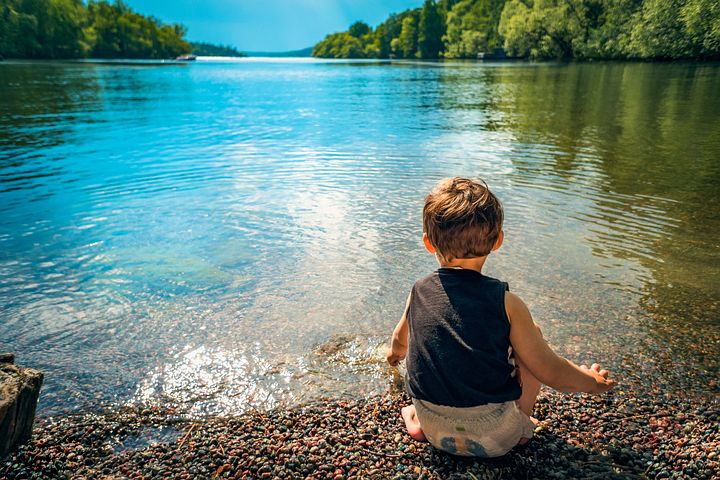
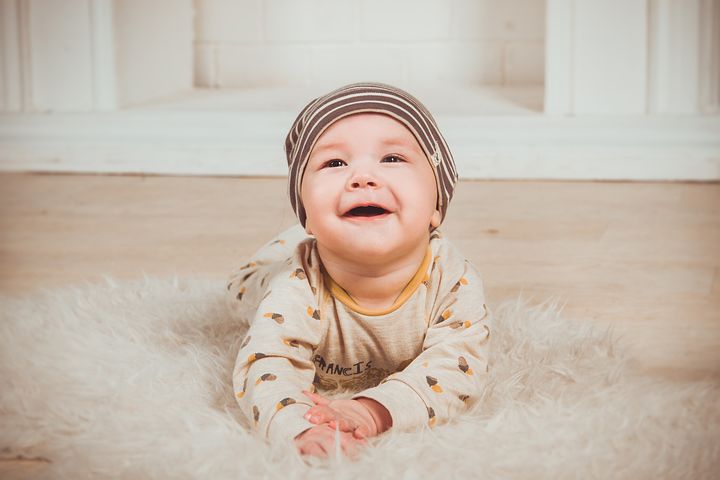
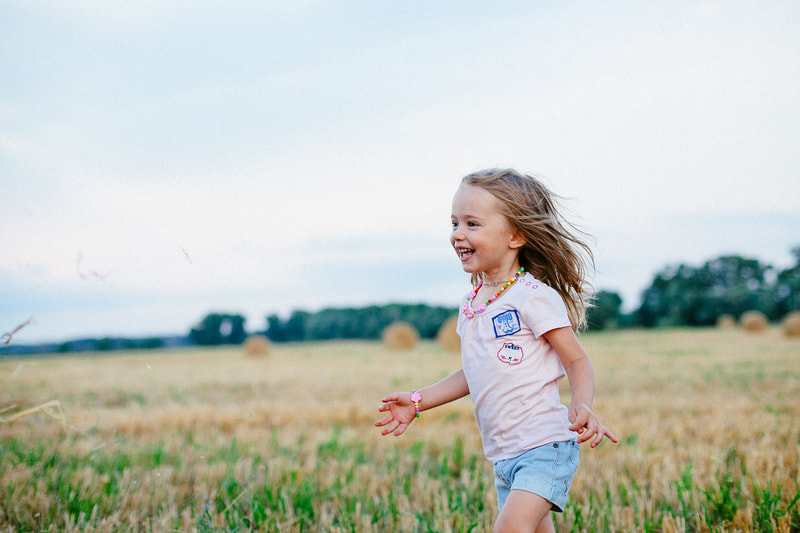
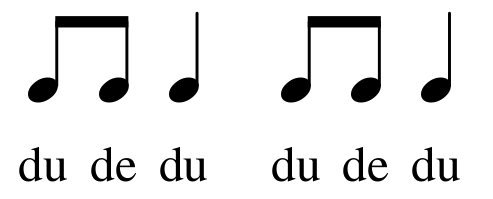

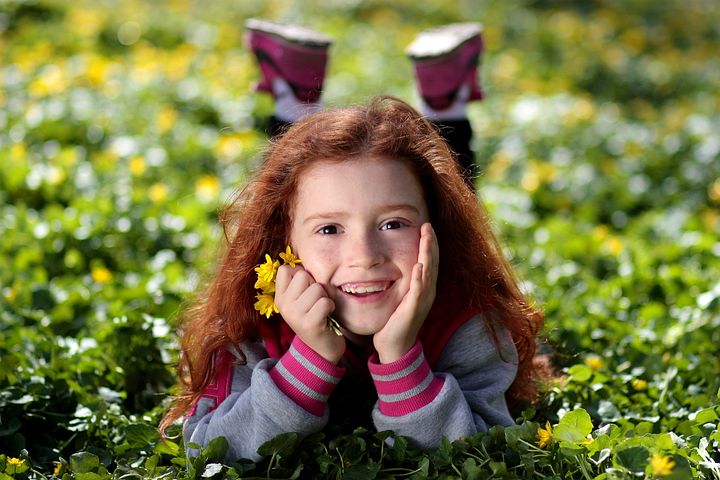
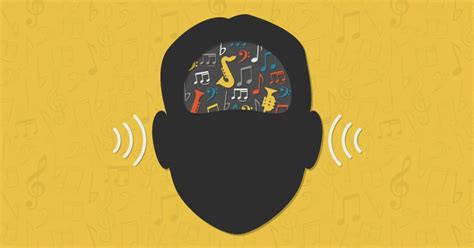
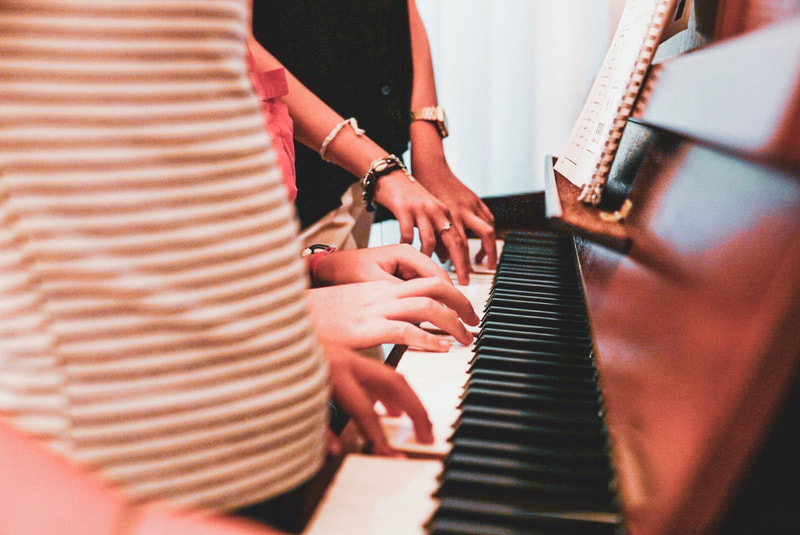
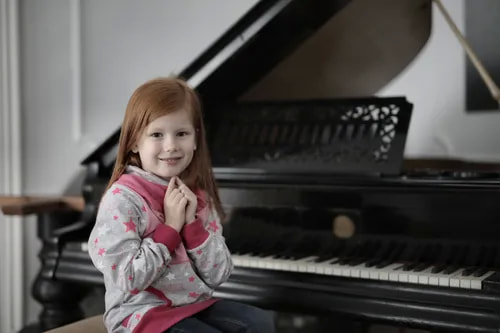
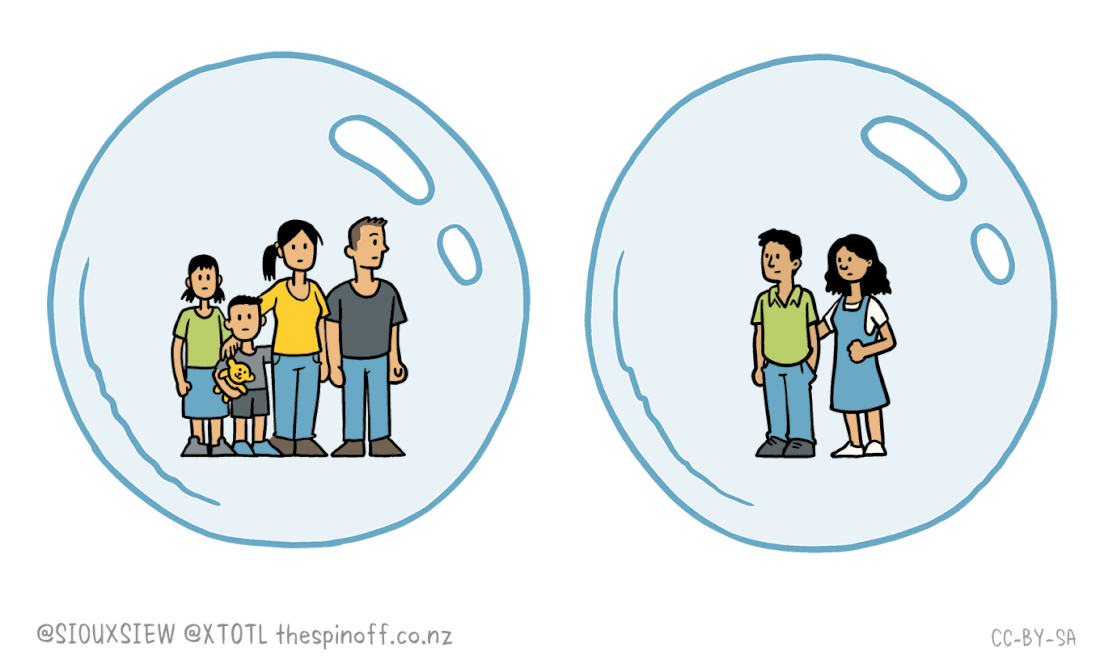
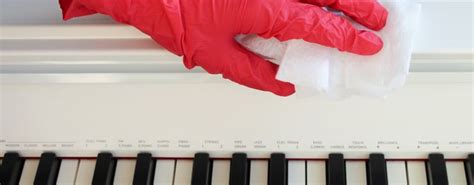
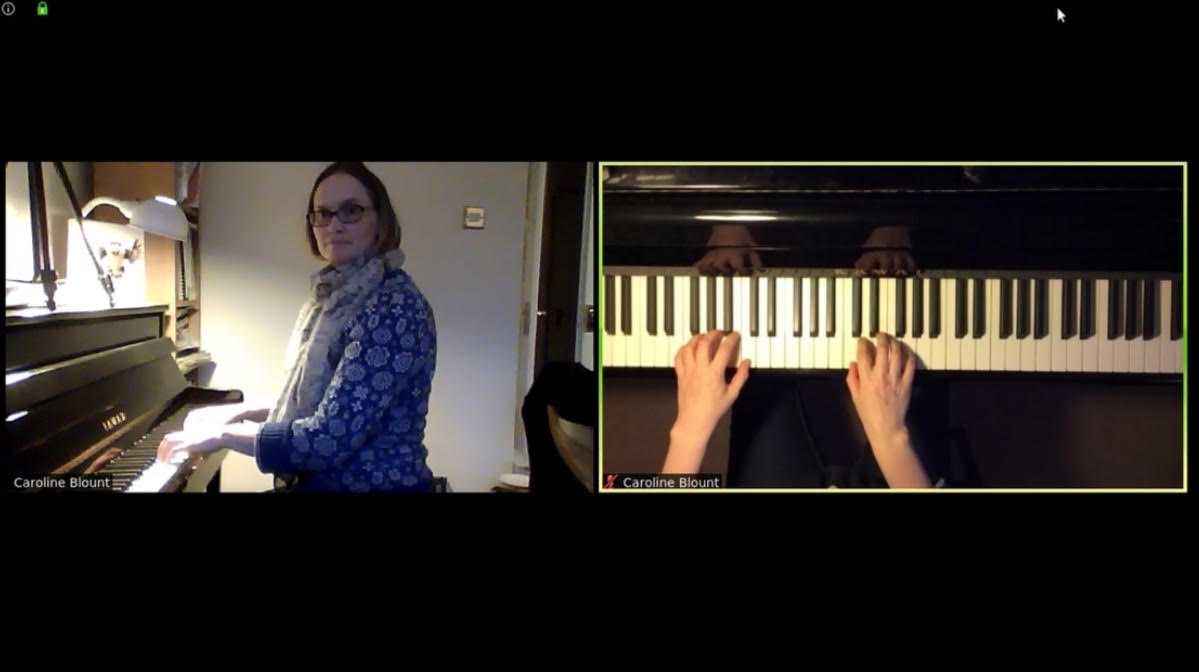

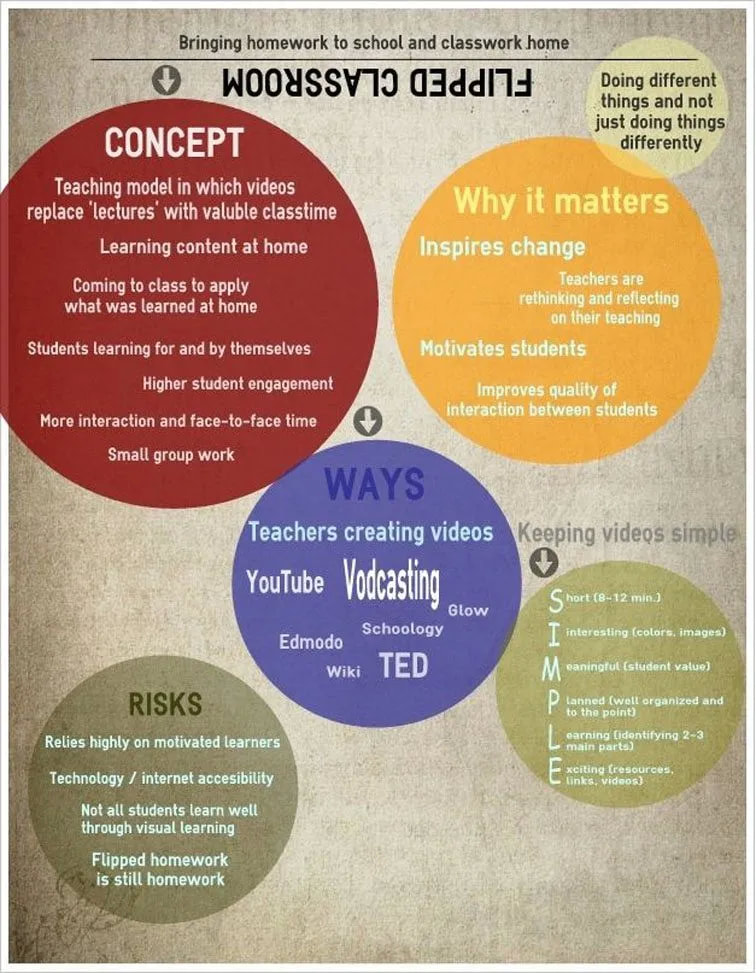



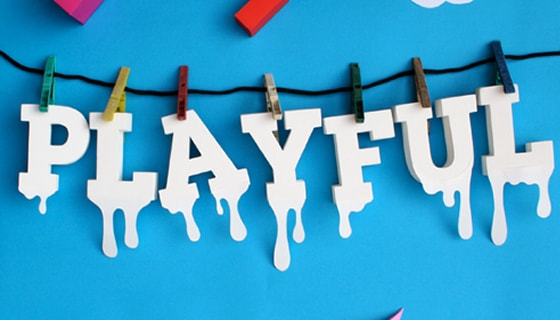


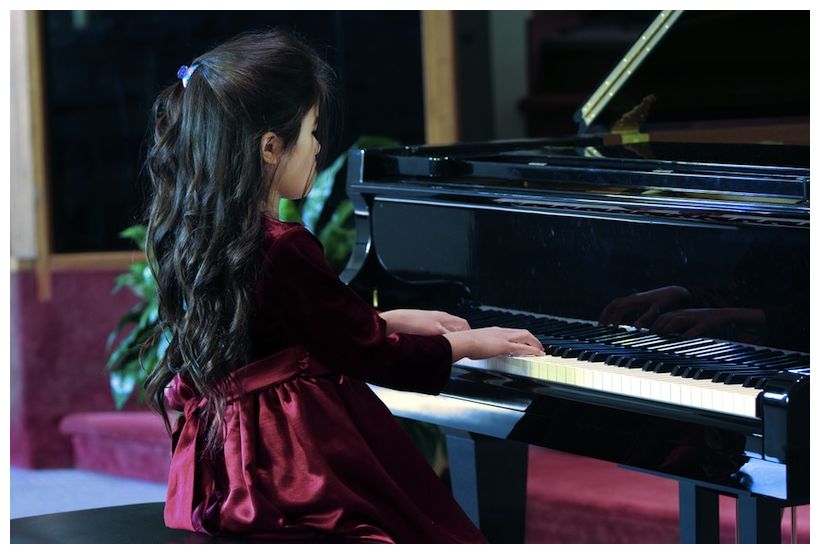
 RSS Feed
RSS Feed